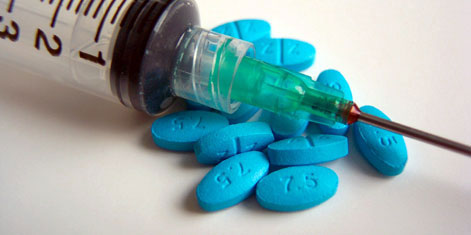| Posted: Dec 18, 2006 | |
Countering the effects of drug overdose with nanotechnology |
|
| (Nanowerk Spotlight) Drug intoxication, developed as a result of accidental overdosing, is a serious health problem. Drug overdoses are sometimes also caused intentionally to commit suicide, but many drug overdoses are usually the result of either irresponsible behavior, or the misreading of product labels. Other causes of overdose (especially heroin) include multiple drug use with counter indications (cocaine/amphetamines/alcohol) or use after a period of abstinence. According to the National Center for Health Statistics, in the U.S. alone almost 20,000 people a year die due to drug overdoses and accidental poisoning. While there has been a tremendous effort to develop drug delivery methods using nanotechnology, a new report shows that this could work the other way around as well, and that porous nanoparticles can soak up drug molecules in the body like a sponge. This could help to reduce fatalities from overdoses, according to tests showing that tiny spheres of poly(acrylic acid) can absorb substantial amounts of an antidepressant and an anesthetic in just a few minutes. In short, nanoparticles can act as potent antidotes! | |
 |
|
| Nanoscale systems developed for drug delivery are often polymeric in nature and have multifaceted advantages in drug delivery applications. By modulating polymer characteristics, one can control the release of agents from nanoparticles to achieve the desired therapeutic level in target tissues for the required duration and for optimal therapeutic efficacy. Owing to their sub-cellular and sub-micron size, nanoparticles can penetrate deep into tissues through fine capillaries, enter efficiently into the cells and evade detection by reticuloendothelial system. These advantages of nanoparticles can also be used towards the attenuation of the adverse effects caused by overdosing. | |
| Microemulsions and other devices such as liposomes already have been explored for sequestration of overdosed drugs but the world of nanoparticles for such application still remains unexplored. | |
| "Nanoparticles are expected to maintain better structural integrity once introduced inside the body due to their cross-linked structure" explains Ponisseril Somasundaran, Director of the Langmuir Center for Colloids and Interfaces at Columbia University in New York. "We assumed that nanoparticles could effectively extract drugs from bulk media and serve as scavengers for overdosed drugs. Hence the aim of our study was to design novel poly(acrylic acid) (PAA) and alkyl modified poly(acrylic acid) (AMPAA) nanoparticles and investigate their potential towards the sequestration of the drugs amitriptyline (an antidepressant) and bupivacaine (a local anesthetic extensively used during surgical procedures)from bulk media." | |
| The extractions of the drugs from bulk media were monitored at pH 7.4 and at 37°C in saline solution. The average size of the PAA nanoparticles was 80-100 nm. The researchers observed that in 5 minutes the nanoparticles extracted 81% amitriptyline and 62% bupivacaine. | |
| The researchers suggest that the extraction capability of PAA is due to the electrostatic interaction between the negatively charged nanoparticles and positively charged drug molecules at pH 7.4. These nanoparticles can be considered for scavenging a large amount of overdosed drugs, contributing towards the weakening of their adverse effect. | |
| There is significant potential for further research in modifying and improving the nanoparticles to make them more compatible with the human system, said Soma Chakraborty, Post-Doctoral Research Scientist at the Langmuir Center, which could also make them more effective in drug sequestration. His future challenge, he said, is to make the nanoparticles more selective towards only the targeted drugs. | |
| Chakraborty and Somasundaran reported their findings, titled "Sequestration of drugs using poly(acrylic acid) and alkyl modified poly(acrylic acid) nanoparticles" in Soft Matter. | |
 By
Michael
Berger
– Michael is author of three books by the Royal Society of Chemistry:
Nano-Society: Pushing the Boundaries of Technology,
Nanotechnology: The Future is Tiny, and
Nanoengineering: The Skills and Tools Making Technology Invisible
Copyright ©
Nanowerk LLC
By
Michael
Berger
– Michael is author of three books by the Royal Society of Chemistry:
Nano-Society: Pushing the Boundaries of Technology,
Nanotechnology: The Future is Tiny, and
Nanoengineering: The Skills and Tools Making Technology Invisible
Copyright ©
Nanowerk LLC
|
Become a Spotlight guest author! Join our large and growing group of guest contributors. Have you just published a scientific paper or have other exciting developments to share with the nanotechnology community? Here is how to publish on nanowerk.com.
